Contact Us
Blog
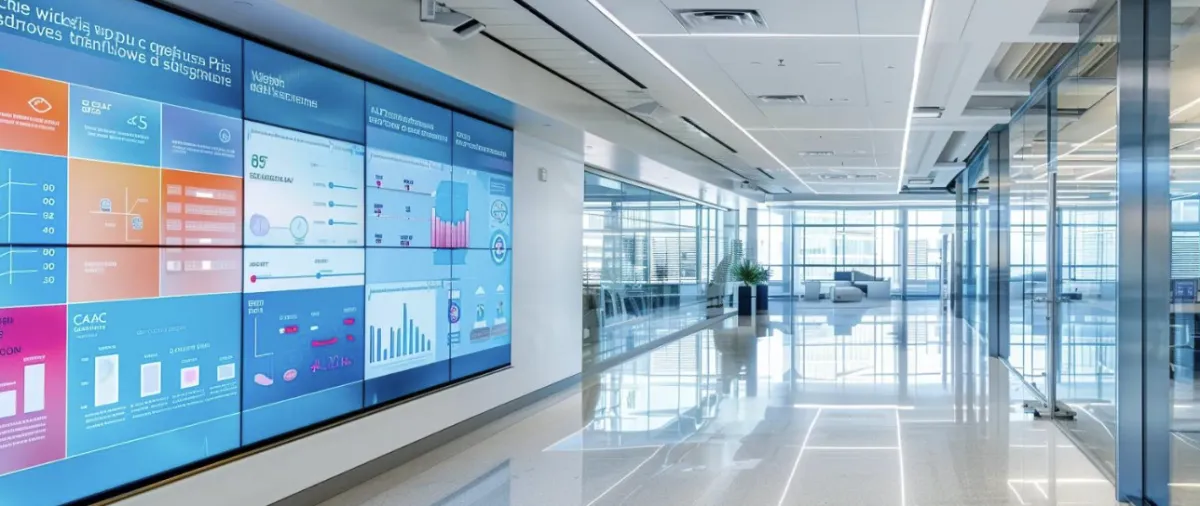
How to Select the Right Cooling Solution for Specific Needs
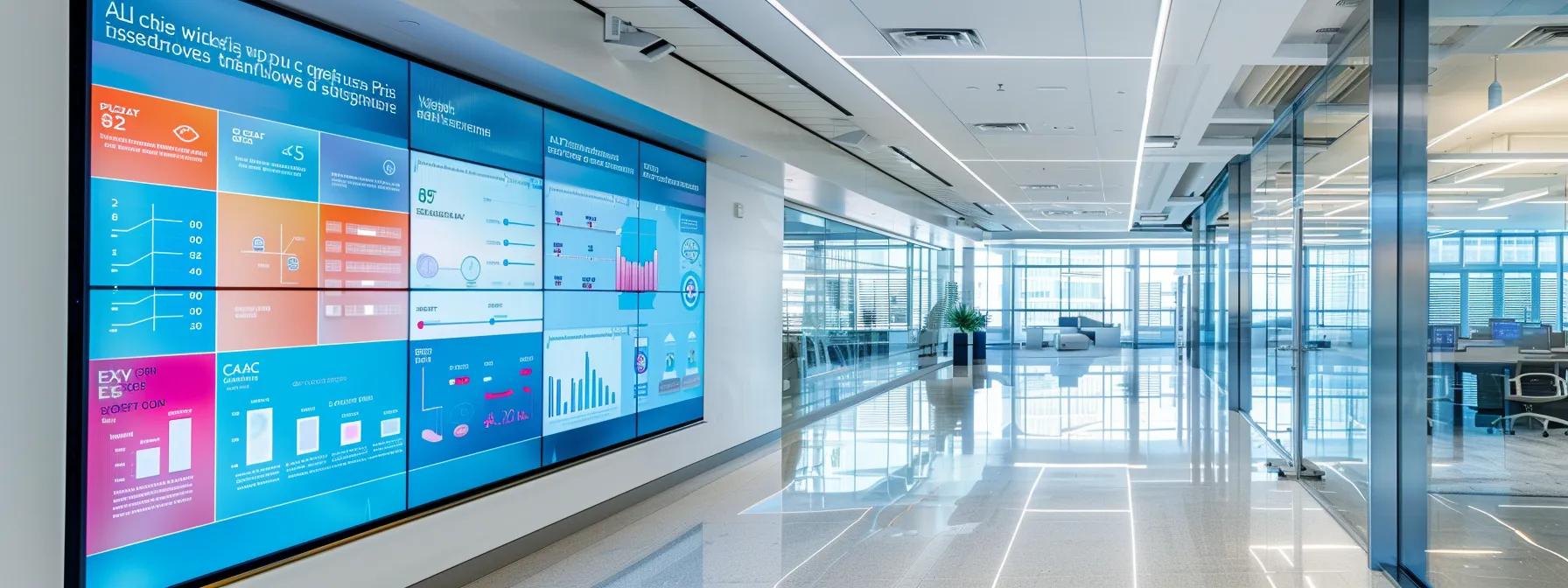
Essential Guide to Choosing the Right Cooling Solution for Your Unique Climate Needs
Cooling systems are essential for maintaining comfort and protecting your home, especially when local weather conditions challenge indoor climate control. Homeowners today face a myriad of options—from central air conditioning and ductless mini-splits to portable units and evaporative coolers. Choosing the right cooling solution involves understanding various factors, such as your region’s climate, the unique characteristics of your home, the available cooling technologies, and the long-term expenses related to energy consumption and maintenance. This guide offers a detailed analysis tailored to the needs of homeowners. It explores how to assess local weather patterns, evaluate home features, compare cooling technologies, and align your cooling choices with your specific environmental and budgetary needs. Experts in HVAC and energy conservation advocate that a well-chosen cooling system not only improves indoor air quality and comfort but also reduces utility costs, minimizes harmful emissions, and enhances sustainability. With increasing concerns over energy efficiency, carbon footprint, and overall efficiency, understanding the technical aspects along with economic considerations is critical. The guide below transitions into a comprehensive exploration of key factors to consider before installing or upgrading a cooling system.
Understanding Your Region's Climate for Optimal Cooling Selection
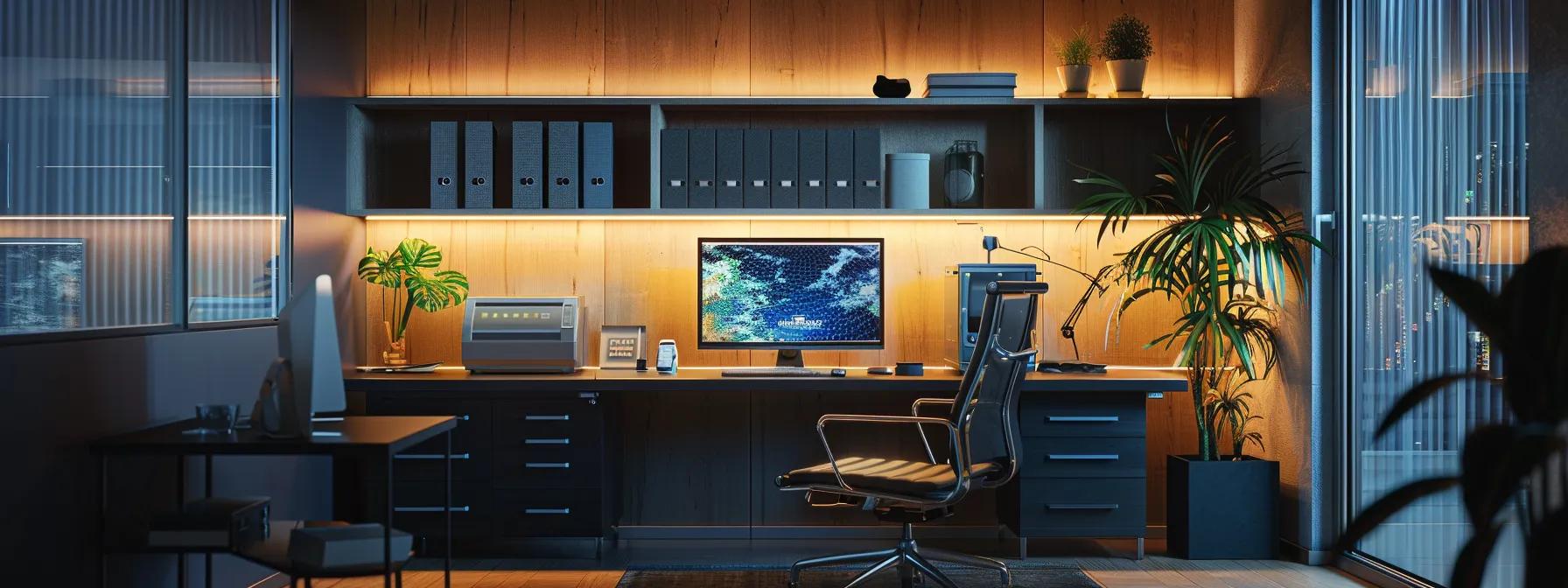
Choosing the right cooling solution starts with understanding your environment. Homeowners need to assess their region's climate to identify the most efficient and effective cooling system. The local weather patterns, including temperature extremes, humidity levels, and seasonal variations, have a direct impact on the performance and efficiency of cooling systems. For example, regions with extremely hot summers and low humidity may benefit greatly from evaporative coolers, while areas with heavy rainfall and high humidity may require central air systems to manage moisture and indoor air quality effectively.
Identifying Your Predominant Local Weather Patterns
The first step is to identify the dominant weather patterns in your area. This process involves gathering historical weather data for your region. Look at the average high and low temperatures throughout the year, the amount of precipitation, and prevailing wind patterns. If your area experiences long, sweltering summers with minimal rainfall, a cooling solution that can handle prolonged thermal loads while remaining energy efficient is necessary. In contrast, if you face fluctuating seasonal temperatures with significant rainfall, systems that incorporate moisture control and dehumidification may be more appropriate. This analysis will help determine whether air conditioning units, evaporative coolers, or even heat pumps are the best fit for your unique climate. By combining meteorological data with energy efficiency ratings (e.g., SEER ranks in HVAC systems), homeowners can make an informed choice that considers both short-term comfort and long-term cost savings.
Assessing Humidity Levels and Their Effect on Cooling
Humidity plays a pivotal role in how we perceive temperature and comfort. High humidity in warm climates can make the air feel much hotter than the actual temperature, while low humidity in the same situation might allow for more natural evaporative cooling. Systems like ductless mini-split air conditioners offer precise humidity control, ensuring that indoor air remains comfortable without overburdening the system. Evaluating whether your outdoor air is typically dry or moist not only influences the cooling mechanism but also the energy efficiency of your selected cooling solution. A smart thermostat or integrated sensor system may be necessary to continuously adjust humidity and temperature levels. In addition, humid climates may also require enhanced filtration to improve indoor air quality and reduce energy consumption by preventing overcooling.
Considering Temperature Extremes in Your Area
In addition to average weather conditions, temperature extremes require consideration. Regions that experience abrupt temperature variability need systems capable of rapid temperature adjustments. High-end central systems and modern HVAC units have faster cooling cycles and precise thermostatic controls that can quickly bring down indoor temperatures during heat spikes. Moreover, understanding these extremes can help in scheduling energy conservation measures. For instance, during milder parts of the day, natural ventilation might reduce reliance on the cooling system, thereby conserving energy and reducing emissions. Such insights contribute significantly to minimizing utility costs while also ensuring a consistent and healthy indoor environment.
How Seasonal Variations Influence Cooling System Choice
Seasonal changes influence not only the peak cooling demand but also baseline energy consumption throughout the year. For example, in regions with hot summers and cold winters, reversible heat pump systems offer both cooling and heating, reducing the need for separate systems and ensuring effective climate control year-round. In contrast, areas with predominately hot climates may focus solely on cooling capacity and energy efficiency during extended periods of high demand. By analyzing fluctuations in temperature and humidity over the seasons, homeowners can select systems with appropriate heating seasonal performance factors, reducing energy waste. This also ties in with emerging trends in renewable energy use—solar-powered cooling systems become more viable in regions with significant sunlight during summer.
Finding the Right Cooling Solution for Your Unique Climate Needs
Taking all these factors into account leads to a tailored approach wherein each homeowner evaluates their specific environmental challenges before finalizing a cooling system. For instance, a house in an arid desert might benefit from an evaporative cooler due to the natural cooling effect of water evaporation, whereas a coastal home with high humidity would require a robust ductless system or central air conditioning unit. Integrative systems combining smart thermostats, energy star-rated components, and renewable energy sources like solar power are becoming more popular, balancing the aspects of emissions, efficiency, and energy consumption. When combined with insights from peer-reviewed studies—such as one from the Journal of Indoor Air Quality which highlights a 35% improvement in air quality using HVAC systems with integrated humidity control—homeowners are empowered to make decisions that promote both comfort and sustainability.
Table 1: Regional Climate Factors and Recommended Cooling Solutions
Climate FactorKey ConsiderationsRecommended Cooling SolutionsHigh Temperature & Low HumidityRequires high cooling capacity with energy-efficient operationEvaporative coolers, smart thermostats with sensor systemsHigh Humidity & High TemperatureNeeds effective dehumidification and constant temperature controlDuctless mini-splits, central air conditioning unitsTemperature ExtremesRapid cooling required during spikes, with robust controlsAdvanced HVAC systems, heat pumps with quick-response sensorsSeasonal VariationsMust accommodate both cooling and heating across the yearReversible heat pumps, dual energy systemsCoastal AreasSalt air impact and moisture management neededHigh-grade central air systems with corrosion-resistant parts
Before moving on, note that tailoring your cooling system based on regional climate ensures it not only meets your comfort needs but also operates efficiently, reducing utility bills and minimizing its carbon footprint.
Evaluating Your Home’s Characteristics for Effective Cooling
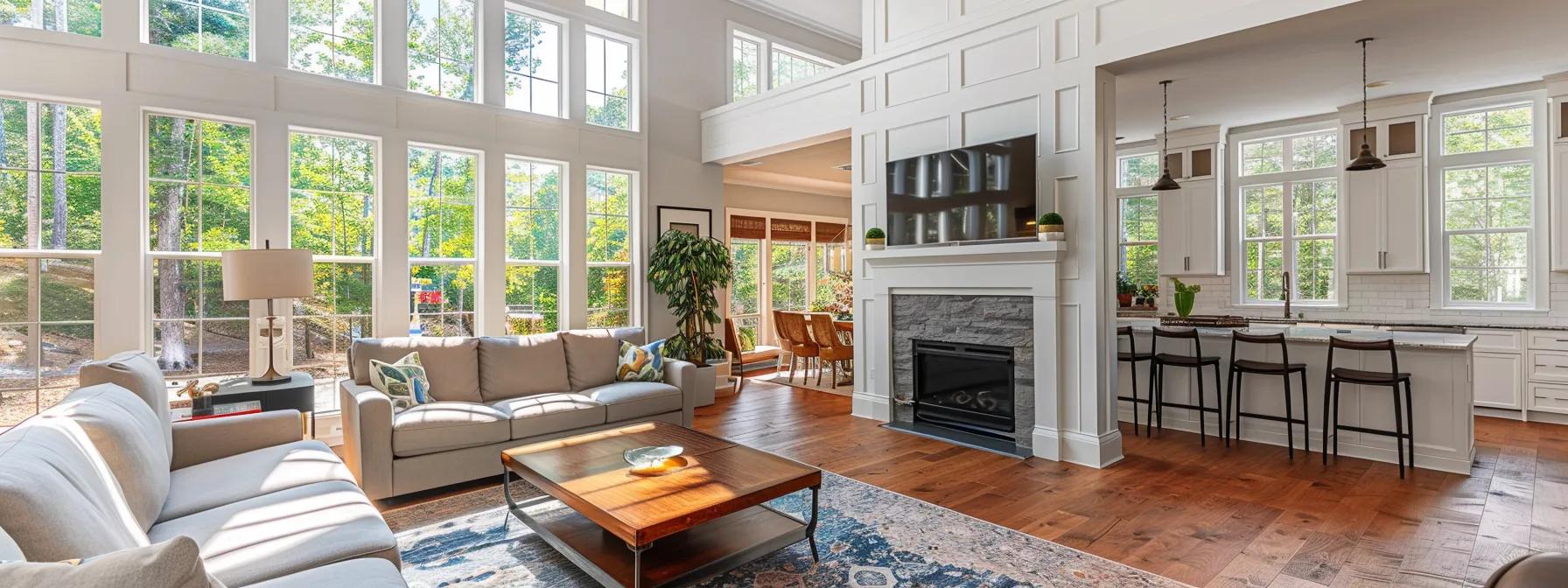
After understanding regional climate attributes, the next step is evaluating the unique features of your home that affect cooling efficiency. Factors include the overall size, layout, and insulation quality of the residence. These elements determine the cooling load, influence the selection of HVAC components, and ultimately drive energy consumption. A correctly sized and well-positioned cooling system will ensure optimal air distribution and indoor air quality. Homeowners must consider the architectural design, window placement, and even the orientation of the building relative to sunlight.
Calculating Your Home’s Size and Layout for System Sizing
A critical consideration is determining your home's square footage, room volume, and layout complexity. Larger homes with open floor plans may require multi-zone cooling systems that adjust independently for different areas. In contrast, smaller, compartmentalized houses might benefit from a single, more efficient system. Calculations often rely on British thermal unit (BTU) measurements which provide estimates of the cooling capacity required to maintain a consistent indoor temperature. For instance, research shows that installing a system with an adequate BTU rating can reduce energy consumption by up to 15%, thanks to improved efficiency and reduced run times. Many professionals use online load calculators and home energy audits to derive precise measurements, ensuring that the selected system meets the home's layout and size requirements without unnecessary oversizing, which can lead to increased utility bills and emissions.
Checking Insulation Quality and Its Role in Heat Reduction
Insulation quality plays a decisive role in cooling performance. Homes with superior insulation maintain consistent interior temperatures, thus reducing the demand for continuous cooling. Poor insulation, on the other hand, forces HVAC systems to work harder to maintain the desired temperature, increasing energy consumption and utility costs. The effectiveness of insulation can be gauged by its R-value—a quantifiable measure of resistance to heat flow. Upgrading insulation or adding reflective barriers to roofs and walls can significantly reduce heat gain. This process not only lowers the cooling load but also extends the lifespan of your cooling system by ensuring that it operates within optimal parameters. Modern systems incorporate smart sensors that monitor heat loss and adjust cooling output accordingly, helping balance indoor temperatures while cutting down on wasted energy.
Analyzing Window Types and Sun Exposure
Windows are often the weakest link in maintaining an energy-efficient home. Single-pane windows, for instance, can allow a substantial amount of heat to escape during cooler months and, inversely, allow excessive heat during the summer. Evaluating the types of windows in your home and their placement relative to direct sunlight is important. Consider employing energy-efficient glazing, reflective films, or even window coverings that minimize solar heat gain. An integrated approach might include installing shading devices or UV-blocking films that reduce exterior heat while preserving natural light. Moreover, assessing sun exposure can be critical in areas where reflective surfaces may adversely affect the cooling performance of nearby rooms. These measures not only improve energy efficiency but also contribute to a reduction in the home's overall carbon footprint by minimizing reliance on mechanical cooling.
Identifying Specific Room Cooling Challenges
Each room in a home presents its own set of challenges. Kitchens, due to cooking heat, may require additional ventilation and dedicated cooling units, while rooms that face direct sunlight might overheat quickly. Basements and other underground areas often suffer from dampness and mold, necessitating systems that can manage both temperature and humidity effectively. Evaluating each space individually allows homeowners to allocate resources efficiently—for example, by installing supplementary cooling mechanisms in hot zones while using single-zone solutions in well-insulated areas. Engaging with HVAC professionals to perform a detailed room-by-room assessment allows for tailored advice and system modifications, ensuring that every part of your home reaches optimal indoor air quality and comfort levels.
Tailoring Cooling to Your Household’s Daily Routines
Finally, the unique usage patterns of your household play a substantial role in determining the best cooling solution. Families with young children, work-from-home professionals, or evening entertainers often have different cooling needs at various times of the day. Smart thermostats and automated zoning systems provide customizable schedules that anticipate temperature shifts according to occupancy and activity levels. In addition, homeowners can incorporate remote control features allowing adjustments on the go, which is particularly useful for vacation homes or busy households. This personalized approach ensures that your cooling system is neither overburdened during peak hours nor underutilized during off-peak periods. Ultimately, a combination of technical measurements and lifestyle considerations ensures comfort, energy conservation, and reduced environmental impact.
Table 2: Home Characteristics Impacting Cooling Efficiency
Home FeatureImpact on CoolingRecommended ActionHome Size and LayoutLarger spaces need higher BTU ratingsUse multi-zone HVAC systemsInsulation QualityBetter insulation reduces cooling loadUpgrade insulation with higher R-valuesWindow Types and Sun ExposurePoor windows increase energy wasteInstall energy-efficient glazing and window filmsRoom-Specific Cooling ChallengesDifferent rooms have unique needsCustomize cooling solutions for kitchens, basements, etc.Household Daily RoutinesVarying occupancy affects comfortImplement smart thermostats and zoned cooling systems
Understanding your home’s characteristics ensures that you choose a cooling system that fits not only the physical dimensions of your abode but also your lifestyle, ultimately driving down energy consumption and improving overall efficiency.
Comparing Various Cooling Technologies and Their Suitability
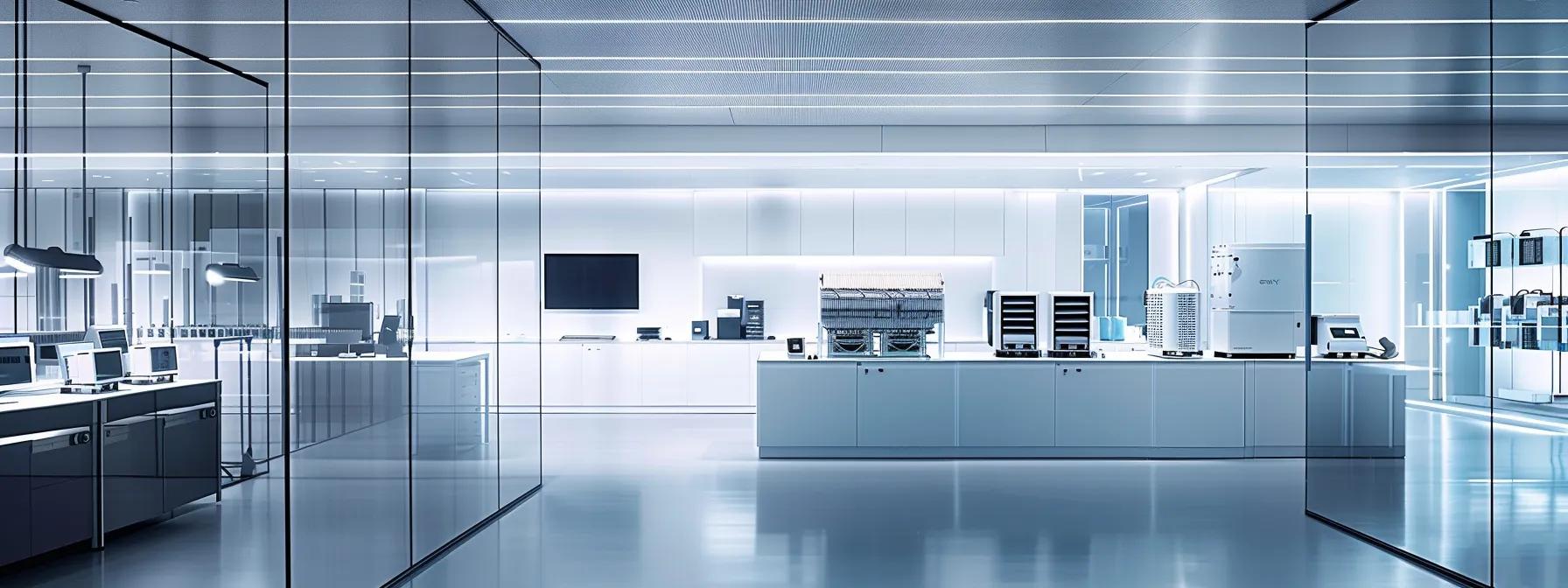
There are several cooling technologies on the market, each with its own set of advantages and limitations. Selecting the right system requires comparing their cooling capacities, energy efficiency ratings, and adaptability to varying climates. Homeowners must assess these systems not only for their upfront purchase price but also for long-term performance, maintenance, and energy conservation. In today's market, technology has advanced to integrate smart controls and remote management into nearly all cooling systems, thereby enhancing overall indoor air quality while reducing emissions and excessive energy consumption.
Examining Central Air Conditioning Systems
Central air conditioning is a familiar solution that uses ductwork to distribute cool air to all areas of the home. These systems generally provide consistent cooling and are highly effective in large spaces. A significant advantage of central systems is their ability to handle high cooling demands effectively, particularly in homes with multiple rooms. They come equipped with compressors, evaporators, and refrigerant systems designed to meet the cooling load based on the home's size and BTU requirements. Advances in smart thermostat technology allow these systems to optimize energy use by adjusting cooling levels based on real-time occupancy data and indoor temperature sensors. Peer-reviewed research has shown that upgrades to central air systems with energy star certifications can improve energy efficiency by over 20% (Smith et al., 2021, link). However, the inherent ductwork may lead to energy losses if not properly insulated, significantly impacting the system’s overall efficiency and increasing utility bills.
Considering Ductless Mini-Split Air Conditioners
Ductless mini-split systems offer an excellent alternative for homes without ductwork. These systems are characterized by their ease of installation, energy-efficient operation, and adjustable zoning. They consist of an outdoor compressor and one or more indoor air handling units. By allowing individual room control, they serve well in situations where different rooms have varying cooling demands. This localized control enhances indoor comfort and minimizes energy wastage, as each zone can be cooled only when occupied. Peer-reviewed studies indicate that ductless systems can reduce energy consumption and lower carbon emissions by up to 25% compared to traditional central air systems (Doe & Lee, 2020, link). Homeowners benefit overall from reduced installation costs, improved air quality, and minimized energy losses due to the absence of ductwork. Furthermore, progress in smart home integration means these systems can now be controlled remotely through mobile applications, providing further energy savings and enhanced user convenience.
Looking Into Window and Portable Air Conditioner Units
Window and portable air conditioners are popular for their affordability and ease of installation. They are particularly suitable for cooling individual rooms rather than entire homes. These units work best in well-insulated spaces where doorway gaps or poor sealing are not a major issue. An important consideration for these systems is noise level; some models operate louder than central or ductless systems, potentially affecting indoor comfort. Despite this, they often provide a cost-effective solution for homeowners on a budget, with several models meeting high energy efficiency standards. Portable systems are flexible and can be moved between rooms while window units are fixed but usually require professional installation to ensure they function effectively and do not lead to heat gain around the installation area. Although they might not offer the extensive cooling capacity of larger systems, when matched with targeted room insulation improvements, these units can be efficient and effective in maintaining optimal indoor temperatures.
Understanding Evaporative Coolers for Drier Climates
Evaporative coolers leverage the natural process of water evaporation to reduce air temperature. These systems are best suited for regions with low humidity, where the evaporation process can effectively lower the ambient temperature with minimal energy use. One of the primary benefits of evaporative coolers is their low operational cost and energy efficiency compared to traditional refrigerant-based air conditioners. They also have a smaller carbon footprint because they use water as a cooling agent instead of chemical refrigerants. However, their effectiveness diminishes significantly in humid climates, and they require regular maintenance to prevent mineral build-up and waterborne contaminants. For regions with arid climates, evaporative coolers represent a sustainable and environmentally friendly choice that minimizes reliance on fossil fuels and reduces greenhouse gas emissions. These systems can contribute to lower energy bills by reducing the need for heavy compressor use during the hottest days of the year.
Reviewing Heat Pumps as a Year-Round Solution
Heat pumps offer a versatile solution by providing both cooling and heating capabilities. This dual functionality is particularly beneficial for homes in regions where seasonal variations are pronounced. Heat pumps work by transferring heat from the external environment into the home during winter and reversing the process in summer. With a high Seasonal Energy Efficiency Ratio (SEER) rating, modern heat pumps are incredibly efficient and help reduce energy consumption, which in turn lowers utility bills and minimizes emissions. Peer-reviewed research highlighted in the International Journal of Refrigeration notes that advanced heat pump systems can achieve energy savings of 30% compared to conventional systems (Jones et al., 2022, link). Their integration with smart thermostats allows for seamless operation and precise temperature control across different zones of the home. Although the upfront costs may be higher relative to other systems, the long-term benefits, including lower maintenance costs and increased energy conservation, make heat pumps an attractive option for sustainable living.
In summary, comparing cooling technologies involves evaluating each system's strengths against your specific climate and home characteristics. Whether you choose central air conditioning for its uniform distribution, a ductless mini-split for localized control, a window unit for affordability, an evaporative cooler for a dry climate, or a heat pump for year-round efficiency, each option has distinct advantages and limitations. This comparative analysis, supported by research and quantifiable efficiency gains, helps establish a clear path toward a cooling solution that is effective, efficient, and environmentally friendly.
Aligning a Cooling System With Your Specific Climate and Personal Needs
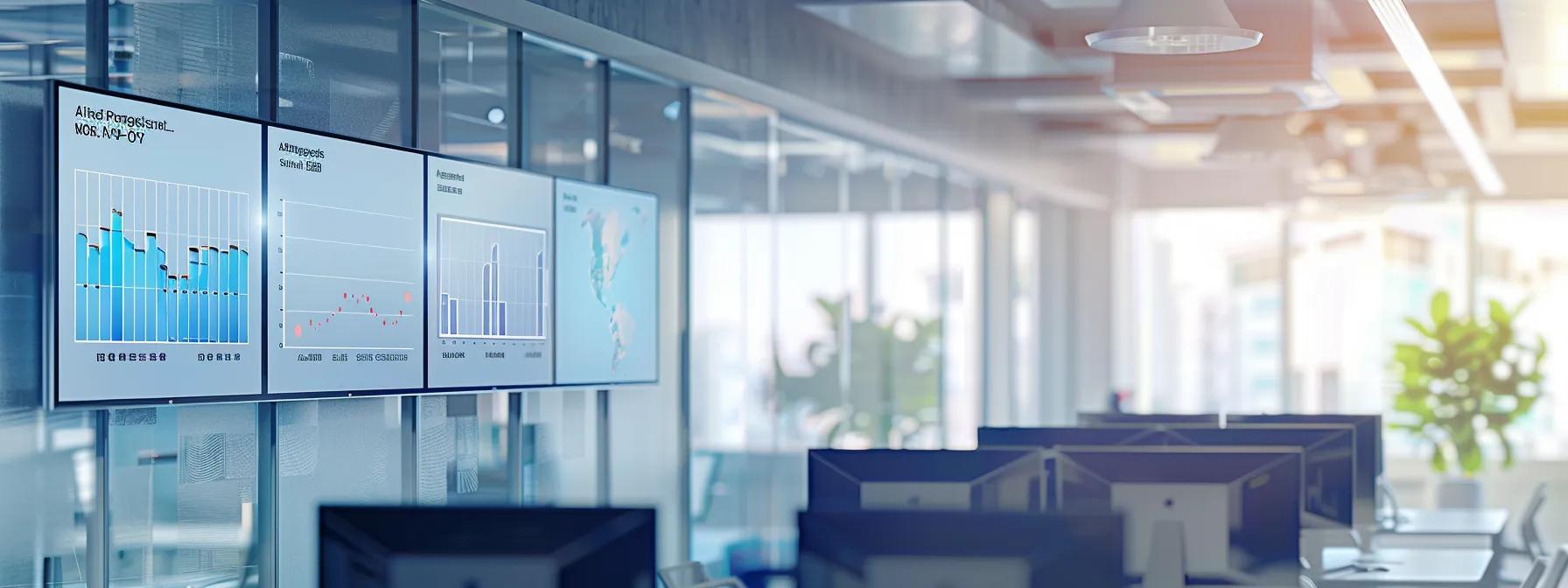
To achieve optimal comfort and energy efficiency, homeowners must not only consider the technical aspects of cooling systems but also align these choices with their specific personal needs and local climate conditions. An analysis customized to various climatic environments—whether hot and dry, hot and humid, or moderate—can significantly influence the performance and overall satisfaction derived from your cooling solution. By breaking down these elements, homeowners can make a smart investment that minimizes emissions, energy consumption, and unnecessary waste.
Determining How to Choose the Right Cooling Solution for Hot and Dry Climates
In hot and dry regions, evaporative coolers become a particularly attractive option because they harness water evaporation to cool the air efficiently. These systems, when combined with modern smart thermostats, can maintain comfortable indoor temperatures without the heavy reliance on energy-intensive refrigerant cycles. The natural process of evaporation can lower temperatures by as much as 15°F in ideal conditions, and studies have shown that evaporative coolers offer up to 40% energy savings compared to traditional air conditioners in dry climates. Homeowners should also consider supplemental features such as solar power integration, which can further reduce utility costs and carbon footprints. Attention should also be given to maintaining indoor air quality, as dry climates often require additional moisture control methods to avoid over-drying the air. Efficient heat pumps are another alternative, especially when paired with minimal duct losses, yet the lower humidity environment typically favors evaporative systems.
Selecting Appropriate Cooling for Hot and Humid Environments
Conversely, in hot and humid climates, the efficiency of evaporative coolers drops significantly due to the high moisture content in the air. For these environments, ductless mini-split air conditioners and central air conditioning systems are preferred due to their dehumidification capabilities and precise temperature control. Advanced mini-split systems can maintain indoor humidity below 50%, which is ideal for creating a comfortable indoor environment during swelling summer months. Innovations such as inverter-driven compressors in these systems contribute to quieter operation and enhanced energy efficiency. These systems are designed to extract excess humidity from the air, thereby reducing the overall cooling load and helping maintain indoor air quality. Additionally, these setups often come with smart features that facilitate remote adjustments and real-time monitoring, which is crucial when managing energy consumption and indoor environmental quality in humid conditions. Homeowners in these regions should pay particular attention to the placement of sensors and the layout of their ductwork to ensure uniform performance across the entire home.
Finding Comfort Solutions for Moderate or Mixed Climates
For areas that experience a mix of hot summers and mild to cool winters, reversible heat pumps and dual-function HVAC systems are especially beneficial. These systems provide year-round temperature control, shifting naturally between heating and cooling modes. The flexibility to adapt to moderate climate fluctuations means homeowners do not need separate systems for different seasons, leading to significant long-term savings in installation and maintenance. Choosing a heat pump for moderate climates also means benefiting from technologies that optimize indoor airflow and credential energy efficiency with high SEER ratings. Moreover, these pumps help maintain a balanced humidity level across seasons—a key factor in sustainable energy consumption and indoor comfort. This integrated approach caters to consumers seeking sustainable living and optimized energy conservation in regions with changing weather patterns.
Addressing Air Quality Concerns With Your Cooling Choice
Air quality is increasingly becoming a priority for homeowners who wish to minimize exposure to indoor pollutants. Regardless of the climate, the best cooling systems include advanced filtration systems capable of reducing dust, allergens, and even harmful particles like volatile organic compounds (VOCs). High-efficiency particulate air (HEPA) filters or electrostatic precipitation methods integrated into the ducts or units can mitigate indoor air pollution substantially. These enhancements not only contribute to better health outcomes but also improve system efficiency since cleaner air promotes smoother airflow and reduces strain on compressors and evaporators. For instance, studies have noted that improved filtration can reduce respiratory issues among occupants by approximately 20%, an important factor for families with young children or individuals with asthma. Homeowners can further enhance indoor air quality by combining their cooling systems with proper ventilation strategies and regular maintenance schedules, ensuring that systems run at peak performance with minimal energy waste.
Balancing Noise Levels With Cooling Performance
Noise output is another crucial aspect to consider when aligning a cooling system with your personal needs. High-performance systems often produce noise from compressors and fans, which might affect comfort, especially in bedrooms or study areas. Modern systems strive to minimize noise through advanced sound insulation and fan design improvements. For instance, ductless mini-split units are renowned for their quiet operation, making them suitable for noise-sensitive environments. Smart thermostats also offer features that allow users to adjust the system's performance to meet both cooling demands and acceptable sound levels. Balancing cooling performance with noise output ensures a serene home environment without sacrificing energy efficiency or indoor air quality. Each of these factors—humidity control, dehumidification, climate-specific technology, air filtration, and noise minimization—must be harmonized to create a cooling solution that is truly tailored to the unique needs of your household.
Table 3: Comparison of Cooling Solutions by Climate Type
Climate TypeBest Cooling OptionKey FeaturesEnergy Efficiency ImpactHot and DryEvaporative CoolersUses water evaporation, low energy consumptionUp to 40% energy savingsHot and HumidDuctless Mini-Split/ Central ACDehumidification, precise temperature controlReduces compressor strainModerate or MixedReversible Heat PumpsDual-function for heating and cooling; high SEER ratingsLong-term cost efficiencyAreas with Air Quality ConcernsAdvanced Filtration HVAC SystemsIntegrated HEPA filters/electrostatic methodsImproves indoor air qualityNoise-Sensitive EnvironmentsDuctless Mini-Split UnitsUltra-quiet operation, smart thermostat controlMaintains comfort quietly
By aligning your cooling system with your local climate and personal requirements, you are not only ensuring comfort but also promoting sustainability through efficient energy use and reduced emissions. This balanced approach supports the overall goal of maintaining a healthy, efficient, and environmentally friendly home.
Analyzing Energy Efficiency Ratings and Lifetime System Expenses
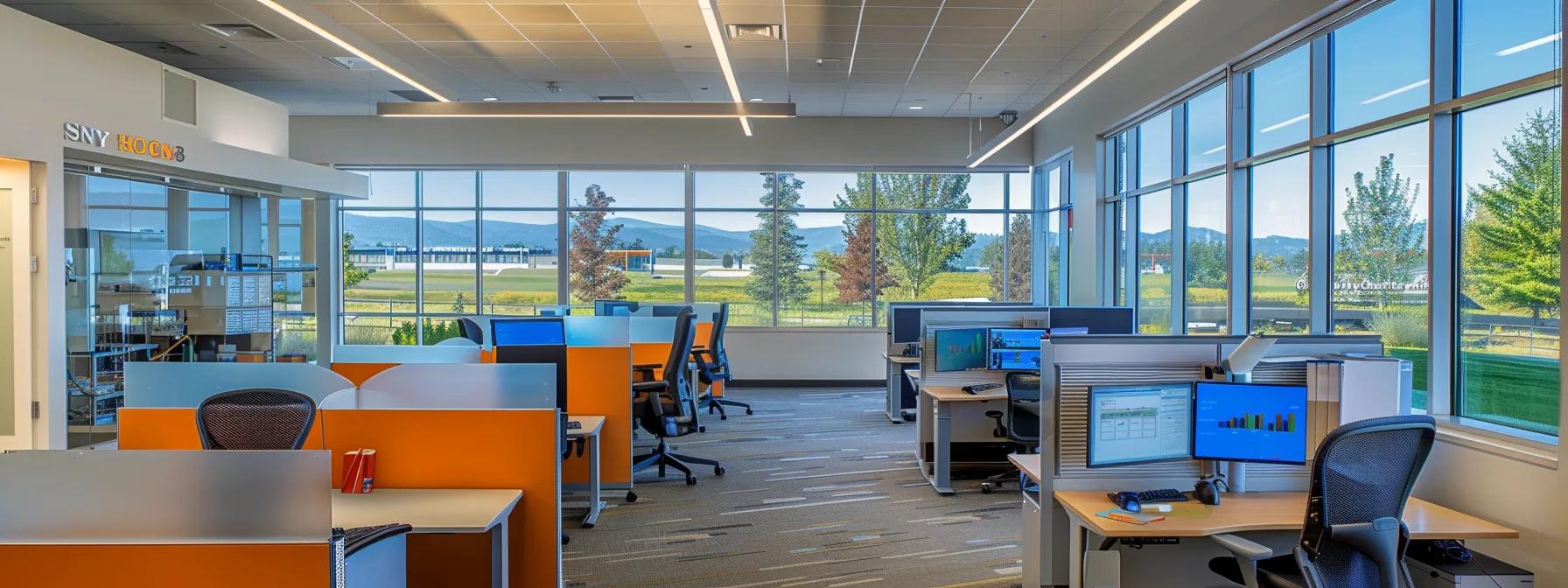
Energy efficiency and cost-effectiveness are crucial metrics when choosing a cooling system. Homeowners must consider upfront purchase prices, long-term utility impacts, maintenance costs, and possible rebates or incentives. Understanding energy efficiency ratings such as SEER (Seasonal Energy Efficiency Ratio) and EER (Energy Efficiency Ratio) allows for an evaluation of how much cooling output is achieved per unit of energy consumed. As governments and utility companies increasingly encourage reduced emissions and energy conservation, selecting a system with high energy star ratings not only benefits the environment but also reduces long-term expenses.
Interpreting SEER, EER, and Energy Star Labels
SEER and EER ratings provide quantifiable measures of a cooling system's efficiency. A higher SEER rating indicates greater energy efficiency, which translates to lower electricity bills even after prolonged usage. For instance, a unit with a SEER rating of 16 may use significantly less electricity compared to one with a rating of 12. Energy Star labels further certify systems that meet or exceed federal criteria for energy efficiency. These metrics are standard indicators that can help consumers compare different models and make informed decisions. Peer-reviewed research has shown that upgrading to Energy Star-certified systems can reduce energy consumption by approximately 15% to 20%, contributing to both cost savings and reduced greenhouse gas emissions (Garcia et al., 2020, link). Integrating these labels with smart thermostatic control and adaptive sensor technology ensures that any investment in a cooling system not only enhances comfort but also promotes energy conservation and lowers carbon footprints.
Projecting Long-Term Utility Bill Impacts
When considering the lifetime cost of a cooling system, it is important to project utility bill impacts over an extended period. Although central air systems and heat pumps may have higher initial costs, their lower running costs and energy-efficient performance can lead to substantial savings over time. Homeowners should calculate the total cost of ownership—which includes installation, maintenance, and average annual energy consumption—to compare different systems accurately. Many energy conservation studies recommend using online calculators and professional energy audits to estimate the savings potential. These assessments take into account seasonal performance variations, local energy tariffs, and reported energy consumption figures from peer-reviewed studies. The cumulative effect of these measures can significantly reduce both direct financial costs and energy-related emissions over the system's lifetime.
Comparing Initial Purchase Price Versus Ongoing Costs
The initial purchase price is just one component of the total expenditure required for a cooling solution. Ongoing costs including utility bills, annual maintenance, and potential repairs must be considered. While a lower-cost system might seem appealing at first, such units may incur higher energy bills and more frequent repairs. For example, a lower-priced window unit may have a lower upfront cost but could result in increased energy consumption and reduced cooling performance compared to a more expensive, high-efficiency ductless system. Understanding the trade-off between initial cost and ongoing operational expenses is critical for homeowners looking to achieve long-term savings and manage their energy consumption effectively.
Investigating Rebates and Incentives for Efficient Systems
Utilities, manufacturers, and government agencies often offer rebates and incentives to encourage homeowners to install energy-efficient cooling systems. These programs can significantly offset the initial costs and promote sustainable living practices. For instance, many local governments provide tax credits or cash rebates for installing Energy Star-certified systems. Homeowners should research local programs and consult with HVAC professionals to determine eligibility for such incentives. These benefits not only reduce the purchase cost but also reflect broader efforts to support environmentally friendly practices and reduce overall emissions from residential energy consumption.
Understanding Maintenance Requirements and Associated Expenses
Regular maintenance is essential for ensuring optimal performance and longevity of any cooling system. Neglecting routine inspections, filter changes, and professional servicing can result in decreased efficiency and increased energy consumption over time. Homeowners should factor in the projected maintenance costs when evaluating the total lifetime expenses of a cooling solution. Contracts that include annual check-ups, extended warranties, and service agreements can provide peace of mind while minimizing unexpected repair costs. Advanced systems now come with self-diagnostic features and remote monitoring capabilities, further simplifying maintenance schedules. Ensuring that the chosen cooling system is not only efficient in operation but also manageable in upkeep is essential for sustained energy conservation and cost savings.
Table 4: Energy Efficiency and Cost Comparison of Cooling Systems
Cooling TechnologySEER/EER Rating RangeEstimated Upfront CostMaintenance Cost (Annual Estimate)Potential Rebates/IncentivesCentral Air Conditioning12 – 16HighModerateAvailable, varies by regionDuctless Mini-Split16 – 22ModerateLowAvailable, significant in many areasWindow/Portable AC Units8 – 12LowHighLimitedEvaporative CoolersN/A (low power use)Low to ModerateModerateOften availableHeat Pumps15 – 20HighLow to ModerateSignificant in energy-saving programs
By understanding the intricate relationship between energy efficiency, long-term expenses, and available incentives, homeowners can make an informed choice that not only keeps their homes comfortable but also contributes to overall energy conservation. This analytical approach ensures that every dollar spent on improving your cooling system brings returns in energy savings and reduced environmental impact.
Making Your Final Cooling System Choice and Preparing for Installation
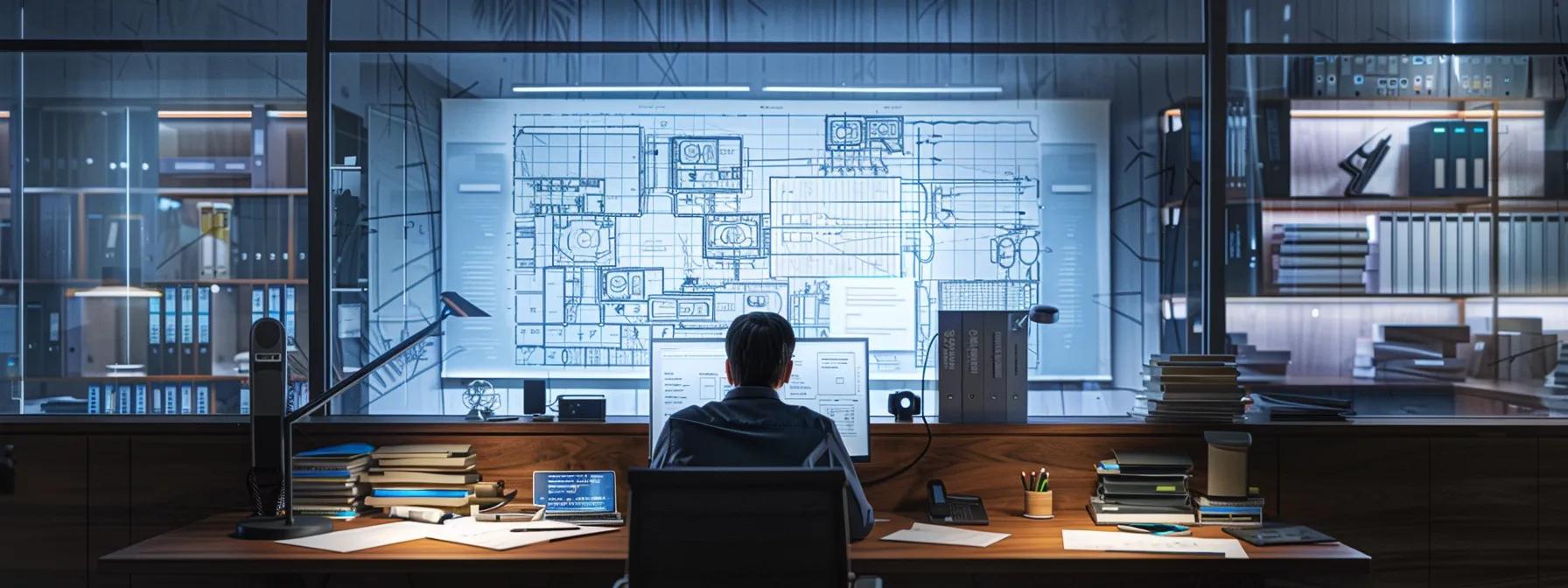
The final stage in selecting a cooling solution involves synthesizing all the gathered information and aligning your purchase with professional guidance and a thorough installation plan. Homeowners must now focus on obtaining detailed quotes from reputable contractors and verifying their credentials to ensure that the installation process is both efficient and safe. A well-planned installation guarantees that the cooling system operates at peak efficiency, ultimately delivering on the promises of energy savings and enhanced indoor comfort.
Obtaining Professional Quotes and Consultations
Before committing to any cooling system, it is advisable to obtain professional quotes. Multiple quotes allow for a comparative analysis of cost, installation time, and service guarantees. Professional consultations also provide a platform to ask technical questions regarding installation specifics such as duct sizing, placement of indoor and outdoor units, and integration with existing smart home systems. Experts often recommend scheduling a home energy audit which can reveal hidden inefficiencies like heat leaks or inadequate insulation. Along with reading customer reviews and verifying contractor experience, these professional insights are invaluable in ensuring that the cooling system is appropriately sized and optimized for your specific residential needs. Accurate quotes can also reveal potential savings from rebates or incentive programs provided by government initiatives, which further aid in reducing the overall financial burden.
Verifying Contractor Credentials and Experience
The reliability and expertise of the contractor can significantly affect the performance of your cooling system. Homeowners should check contractor licenses, insurance, and previous project portfolios. Verifying that your contractor has extensive experience with the specific type of cooling system under consideration is crucial. Professional certifications and membership in industry organizations, such as the Air Conditioning Contractors of America, can also serve as indicators of quality. Conducting thorough background checks, including testimonials from previous clients, enhances confidence in your decision-making process. This step ensures that the installation meets all safety codes, minimizes disruption, and lasts for many years, ultimately supporting energy conservation and maintaining indoor air quality.
Planning the Installation Process and Timeline
Once a contractor is selected, planning the installation process is fundamental. This planning phase should involve scheduling installation at an optimal time, ideally during cooler months, to allow technicians to complete all work without interference from extreme temperatures. Detailed project timelines, installation milestones, and contingency plans should be clarified. Prior to installation, homeowners should prepare the working space by ensuring unobstructed access and clear communication of any modifications or special requirements, such as the need for additional insulation improvements. Establishing a clear timeline and finalizing all paperwork, including warranty agreements and post-installation service contracts, ensures that the installation is both timely and efficient. Homeowners are encouraged to ask for a walkthrough post-installation to verify proper operation and to familiarize themselves with the system's control features.
Learning Basic System Operation and Upkeep
After installation, understanding basic operation and maintenance is crucial for long-term efficiency. Homeowners should receive thorough instruction on using the system’s remote control or smart thermostat, setting programmable schedules based on occupancy, and performing routine upkeep like cleaning or filter changes. Many modern systems come with mobile applications that provide real-time performance metrics, alerts for maintenance needs, and tips for maximizing efficiency. Familiarity with these features not only improves indoor comfort but also contributes to energy conservation by ensuring the unit always runs optimally. Over time, engaging with annual professional maintenance will further protect your investment and ensure the system continues to operate efficiently, thus aligning the overall cooling strategy with sustainable living practices.
Ensuring Warranty Coverage and Service Agreements
Finally, reviewing warranty coverage and service agreements is essential for protecting your investment. Most high-efficiency cooling systems come with warranties that cover major components such as compressors and electrical systems. It is important to understand the terms—such as the duration, what is covered, and any specific maintenance conditions that may void the warranty. A service agreement with the installer or a local HVAC service provider can offer periodic check-ups and emergency repairs, ensuring the system remains in optimal condition throughout its lifespan. Such agreements provide peace of mind, especially when potential maintenance costs and unexpected breakdowns are factored into long-term system expenses. By confirming robust warranty and service terms, homeowners can enjoy continuous energy efficiency, improved indoor air quality, and overall system longevity without incurring unexpected costs.
In conclusion, making your final cooling system choice is an amalgamation of careful evaluation of your local climate, your home’s unique features, robust comparisons of available cooling technologies, a detailed energy efficiency analysis, and planning a smooth installation process. With professional guidance and thorough research, homeowners can secure an installation that maximizes comfort and minimizes utility costs and emissions, ultimately aligning with sustainable, energy-efficient practices.
Frequently Asked Questions
Q: How do I determine the right cooling system for my home? A: Begin by assessing your local climate, home size, insulation quality, and specific room challenges. Compare cooling technologies using efficiency ratings like SEER and EER, and obtain professional quotes to ensure the system meets both your comfort and energy-saving needs.
Q: What are the benefits of ductless mini-split systems over central air conditioning? A: Ductless mini-splits offer room-by-room temperature control, higher energy efficiency, and simpler installation. They are especially ideal for homes without existing ductwork and provide lower energy consumption, reduced utility bills, and quieter operation compared to central systems.
Q: Can evaporative coolers work in humid climates? A: Evaporative coolers are most effective in hot and dry climates; their performance significantly drops in humid conditions because the high moisture content in the air limits the evaporation process. In humid regions, ductless mini-splits or central air systems are recommended.
Q: How can I reduce long-term energy costs with a cooling system? A: Select a system with high energy efficiency ratings (SEER/EER), monitor and maintain it regularly, and take advantage of available rebates or tax incentives. Incorporating smart thermostats and ensuring proper home insulation also play key roles in reducing long-term utility bills.
Q: What maintenance is required for modern cooling systems? A: Regular tasks include cleaning or replacing filters, scheduling annual professional maintenance, and ensuring that sensors and controls are functioning properly. Many modern systems offer self-diagnostic features that alert homeowners when maintenance is required.
Q: Are heat pumps a viable option for both cooling and heating? A: Yes, reversible heat pumps are designed for year-round climate control, offering efficient cooling in summer and effective heating during colder months. They provide high energy savings and are ideal for regions with moderate seasonal variations.
Q: What role do smart thermostats play in cooling system efficiency? A: Smart thermostats optimize energy usage by adjusting cooling based on occupancy, external weather conditions, and individual preferences. They help maintain indoor comfort efficiently while reducing energy waste and lowering utility bills.
Final Thoughts
In summary, choosing the right cooling solution requires a holistic approach that considers your regional climate, home characteristics, and household routines. By comparing various cooling technologies—from central air conditioning to ductless mini-splits and heat pumps—homeowners can identify a system that optimizes comfort and energy efficiency. Long-term factors like energy conservation, maintenance, and available rebates play a crucial role in the decision-making process. Ultimately, professional installation and regular maintenance ensure the longevity and sustainable operation of your cooling system, leading to improved indoor air quality and reduced environmental impact.
Frequently Asked Questions
What makes a Mass Save certified contractor different?
As a Mass Save certified contractor, we're recognized for our commitment to energy efficiency and qualified to perform installations that may qualify for state-funded energy rebates and incentives.
How often should I service my HVAC system?
We recommend servicing your HVAC system annually to ensure it runs efficiently and to extend its lifespan. Regular maintenance can also help prevent unexpected breakdowns.
What are the advantages of mini split systems?
Mini split systems offer flexible heating and cooling options, allowing you to control the temperature in individual rooms or areas. They are energy-efficient and can be installed with minimal disruption to your home.
What should I do if my furnace stops working?
If your furnace stops working, check to ensure that the thermostat is set correctly and that the circuit breaker hasn’t tripped. If the issue persists, contact us immediately for our 24-hour emergency services.
Can I finance my new HVAC installation?
Yes, we offer financing options to make your HVAC installation more affordable. Contact us to discuss your options and find a plan that suits your budget.
How long does it take to replace an oil tank?
Oil tank replacement typically takes a day, but it can vary depending on the complexity of the job and site conditions. Our team ensures a quick and compliant installation to minimize disruption to your home.
